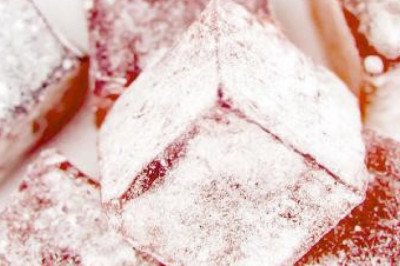views
The phase change materials market size is estimated to reach US$3.5 billion by 2027 after growing at a CAGR of around 15.4% from 2022 to 2027. The phase change materials are latent heat storage materials that store large quantity of thermal energy during phase transition. The PCMs include organic, salt hydrates, polyolefin elastomers, and eutectic combination. The phase change materials are used in passive heating and cooling systems, waste heat recovery systems, solar water heating, HVAC, and others. Furthermore, the demand of PCMs in heating and cooling systems owing to high heat storage capacity, energy storage, and environment friendly impact is driving the phase chase materials market. The innovation in packaging trends and advancement in encapsulation technologies will offer major growth in the phase change materials industry during the forecast period.
COVID-19 Impact
The phase change materials market was majorly impacted by the covid outbreak. The phase change materials have growing applications in the building and construction sector. The halt in construction activities, logistics disruptions, labor shortages, and other lockdown restrictions led to major decline in growth for the building & construction industry. The construction supply chain was disturbed, along with unavailability of raw material, inflationary prices, and reduced workforce. This led to delay in major building projects and construction sites across the globe. According to the World Bank data, the value added by the global construction industry saw a fall from USD 23.296 trillion in 2019 to USD 22.03 trillion in 2020. The decline in the growth of construction sector led to fall in the application of phase change materials such as HVAC, passive heating and cooling systems, and others. Thus, with falling demand of phase change materials across major end-use sectors, the phase change materials industry experienced major slowdown and restricted growth in the pandemic.
Report Coverage
The “Phase Change Materials Market Report– Forecast (2022-2027)” by IndustryARC covers an in-depth analysis of the following segments of the phase change materials industry.
By Encapsulation Technology: Nano-encapsulation, Micro-encapsulation, and Macro-encapsulation
By Type: Organic (Paraffin, Non-Paraffin, Lipids, and Others), Inorganic (Salt Hydrates and Metallic Alloys), and Eutectic
By Application: HVAC, Heating Pads, Solar Cooling, Waste Heat Recovery, Cold Chain & Packaging, Clothing, Food Preservation, and Others
By End Use Industry: Building & Construction (Residential, Commercial and Industrial), Healthcare, Aerospace, Electronics, Photovoltaics, Automotive (Passenger Vehicle, Commercial Vehicle, and Others), Food Industry, Chemical, and Others
By Geography: North America (USA, Canada, and Mexico), Europe (UK, Germany, France, Italy, Netherlands, Spain, Russia, Belgium, and Rest of Europe), Asia-Pacific (China, Japan, India, South Korea, Australia, and New Zealand, Indonesia, Taiwan, Malaysia, and Rest of APAC), South America (Brazil, Argentina, Colombia, Chile, and Rest of South America), Middle East (Saudi Arabia, UAE, Israel, Rest of the Middle East) and Africa (South Africa, Nigeria, Rest of Africa)
Key Takeaways
- The phase change materials market size will increase owing to its growing application in heating and cooling systems, solar cooking, HVAC, cold chain packaging, clothing, and others during the forecast period.
- The Europe holds a dominant position in the phase change materials industry owing to developed building and construction sector and increasing emphasis on smart and green building codes, thereby boosting the demand for phase change materials.
- The organic phase chase materials such as paraffin, polyolefin, fatty acids, and others have growing application in the market due to excellent features such as low solubility in water, heat storage capacity, thermal stability, and lower density.
- Inquiry Before Buying
Phase Change Materials Market Segment Analysis – By Type
By type, the organic segment accounted for the largest share in the phase change materials market and is expected to grow with a CAGR of around 16.7% during the forecast period. The organic phase change materials types are bi-products of the petroleum that have certain temperature of the phase change. The high demand of organic PCMs such as paraffin waxes or polyolefin wax, fatty acids, and others is influenced by its growing application in various end-use industries, majorly in building and construction. Furthermore, the organic phase change materials have excellent properties such as lower density, efficient costs, good heat storage capacity, thermal stability, and high latent heat, thereby boosting its demand in major end-use industries. According to the Australian Construction Industry Forum (ACIF), the Australian building and construction sector projected a growth of 2.7%, with building and construction to reach USD 243 billion in 2021. The paraffin hydrocarbon has low solubility in water, thereby increasingly used in the building materials and construction. Thus, with rising demand of organic phase change materials in the building and construction, the global phase change industry will experience high growth during the forecast period.
Phase Change Materials Market Segment Analysis – By End-Use Industry
By end-use industry, the building & construction segment held the largest phase change materials market share and is expected to grow with a CAGR of over 14.5% during the forecast period. The phase change material has growing applications in the building and construction industry such as for passive heating and cooling systems, solar cooling, and other areas. The PCMs retain latent heat in the solid-liquid phase limit the rapid temperature variations in the internal environment. The increasing demand of thermal energy storage systems in buildings and construction sector provides potential energy conservation. Furthermore, the growing investment and development in smart and green building projects is propelling the demand of phase change materials. According to the United States Census Bureau, the completions of the privately owned housing in February 2022 in the U.S. were at a seasonally adjusted annual rate (SAAR) of 1,309,000, showing a 5.9% increase from the revised estimate in January 2022. Thus, with a rise in demand of phase change materials for building and construction sector, the global phase change materials industry will grow rapidly during the forecast period.
Phase Change Materials Market Segment Analysis – By Geography
By Geography, the Europe is the fastest-growing region in the phase change materials market and is expected to grow with a CAGR of around 17.1% during the forecast period. The growing base for the phase change materials market in this region is influenced by major advancement and demand in various end-use industries such as building & construction, textile, automotive, pharmaceutical, and others. The demand of phase change materials in building materials is offering growth opportunities in the market. Moreover, the rising emphasis on green building and construction in order to reduce the carbon emissions is propelling the growth of phase change materials industry in this region. According to the Office for National Statistics, the monthly construction output rose by 1.1% in volume in January 2022, following an increase of 2.0% in December 2021. Furthermore, rising application of PCMs in solar power, packaging, and textiles sector is boosting the growth prospects in the market. Thus, with the high demand of phase change materials in various end-use industries and rising green building code in European region, the phase change materials market will grow rapidly during the forecast period.
Phase Change Materials Market Drivers
Rising adoption of PCMs in building materials
The phase change material has growing demand in the building and construction sector. The phase change materials are used in the roofs, walls, floors, and other building material such as windows, shutters, and others. The integration of the passive building systems for changing the thermal application has influenced the growth in the market. The rise in combination of PCMs with building materials, concrete, wallboards, roofing, and plastics such as polypropylene, and polyolefin elastomers to increase the thermal efficiency in building is driving the market of phase change materials. According to the India Brand Equity Foundation (IBEF), the DPIIT stated the FDI inflow of worth USD 26.14 billion and USD 25.38 billion in the construction development sector and construction projects respectively between April 2000 and June 2021. Thus, the growing emphasis on smart building materials and infrastructure is offering major demand in the global phase change materials market.
Increasing demand in the solar energy sector
The demand of phase change materials for photovoltaics and solar sector is growing. The phase change materials are isothermal and offer high density energy storage and works well in various temperature conditions. The phase change materials have applications in the solar thermal electricity generating systems, solar cooking, solar water heating system, and others. The solid-liquid PCMs are integrated in the PV panels to absorb the excess heat and regulate the PV temperature, thereby offering thermal energy efficiency. Furthermore, the rising emphasis on the solar power and increasing development in the photovoltaics sector is driving the phase changes materials industry. According to the International Energy Agency (IEA), the solar PV generation in 2020 showed an increase record 156 TWh, marking a growth of 23% from 2019. Thus, the growth in photovoltaics sector is creating major demand in the phase change materials industry and offering growth prospects in the market.
Phase Change Materials Market Challenges
Technical issue and corrosive nature
The phase change materials have growing application in the building and construction. However, the corrosive nature of PCMs and technical issues such as low conductivity or supercooling leads to a major challenge in the market. The supercooling and phase isolation reduce the life cycle of the material, thereby creating a hamper for longtime usage in construction. Furthermore, the inorganic type such as salt hydrates or polypropylene have disadvantages such as corrosiveness, instability, and super cool tendency, thereby reducing the life cycle and leading to additional expenses on maintenance. Thus, owing to these factors, the phase change material faces a growth slowdown in the market.
Global Phase Change Materials Industry Outlook
The global phase change materials top 10 companies include:
- Cold Chain Technologies, Inc.
- Microtek Laboratories Inc.
- Croda International Plc.
- PureTemp LLC
- Henkel AG & Company KGAA
- Advansa B.V.
- Climator Sweden AB
- Honeywell Electronics Materials, Inc.
- Phase Change Materials Product Ltd.
- Outlast Technologies LLC
Recent Developments
In April 2020, the Rubitherm Technologies introduced the newly air-guided ventilation PCM, PhaseCube. The phase change material has availability in various sizes and temperature and offers efficient adaption to the requirement of client's system.
In July 2019, Croda International introduced a bio-based phase change materials in microencapsulated form. This product offers controlled temperature, clothing, automotive interior, and other applications in the market.
In March 2019, the Croda International launched two biobased PCMs, named as CrodaThem 32 and CrodaThem 37. These products offered narrow melting, high cycle stability, high latent heat, and crystallization points.
Relevant Reports
Phase Change Thermal Interface Materials Market - Forecast(2022 - 2027)
Report Code: CMR 24334
Smart Materials Market - Forecast 2022 - 2027
Report Code: CMR 30928
Advanced Phase Change Materials Market - Forecast 2021 - 2026
Report Code: CMR 94289
For more Chemicals and Materials Market reports, please click here











